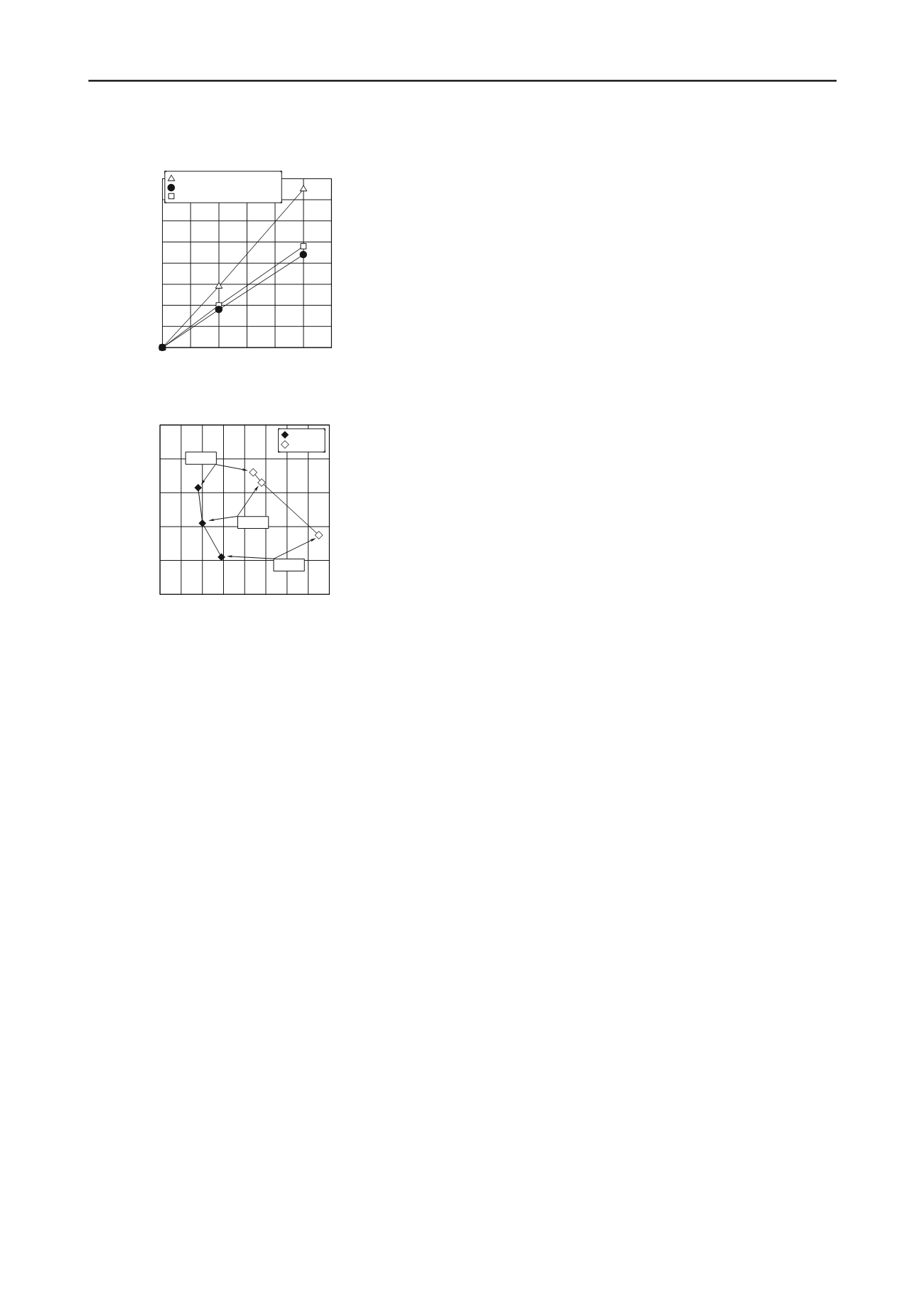
1626
Proceedings of the 18
th
International Conference on Soil Mechanics and Geotechnical Engineering, Paris 2013
0 100 200 300 400 500 600
0
10
20
30
40
50
60
70
80
Acceleration (Gal)
Cumulative displacement of quay wall (mm)
:No improvement(CASE6)
:Irregular(CASE7)
:Regular(CASE8)
effect of the irregular configuration of columns is superior to
that of the regular triangular configuration.
0 10 20 30 40 50 60 70 80
0.0
0.2
0.4
0.6
0.8
1.0
Cumulative displacement of quay wall (mm)
Case6
Case8
Maximum excess pore water pressure ratio
:200Gal
:500Gal
Case7
Figure 12. Accumulated residual displacement at the top of the quay
wall with or without columnar soil improvement
Figure 13. Relationship between maximum excess pore water pressure
ratio and cumulative displacement of quay wall
5 RESULTS OF QUAY WALL MODEL
The interest in this series of tests is focused on the residual
deformation of a model quay wall with or without columnar soil
improvement in the backfill. This idea is certainly in line with
the recent movement towards performance-based seismic design
principle.
Figure 12 illustrates the lateral displacement that was
accumulated at the top of the quay wall with repeated shaking.
Obviously the regular configuration of columns reduced the
displacement and the irregular configuration achieved even
better mitigation. Note that this mitigation is partially because
the anchorage was stabilized by the columnar soil improvement.
Another reason is the stabilization of the backfill that exerts
directly earth pressure on the quay wall.
Figure 13 shows the relationships between the ratio of
developed excess pore water pressure (% of the initial effective
vertical stress) and cumulative displacement of quay wall. The
excess pore water pressure ratio is measured (p6 in Fig.2) at
350mm depth in the region at the central position of the
improved area.
It is important that lower pore water pressure is caused by
such two mechanisms as 1) greater resistance of sand against
liquefaction, and 2) positive dilatancy after large shear
deformation of sand. In the present case, Case 6 without
improvement shows the lowest pore pressure ratio because of
the large shear deformation and positive dilatancy of sand
behind the wall. Conversely, the higher pore pressure in Cases 7
and 8 is the consequence of reduced soil deformation. It is
noteworthy, therefore, that mitigative effects should not simply
be evaluated by the magnitude of excess pore water pressure. A
similar finding was reported in a former study of the authors’
group (Mizutani et al., 1998).
6 CONCLUSIONS
The mitigation of lateral displacement of liquefied ground was
studied by running 1-G model tests with a special interest in the
irregular configuration of vertical embedded columns. The
following conclusions were drawn from the present study.
(1) The sloping ground model tests showed heaving on the
upstream side of the improved area. This deformation was
induced by the damming effect of the irregular configuration
of columns.
(2) The triangular configuration did not exhibit such a
damming-up effect because its mitigative effect is less
significant and passing-through of liquefied sand was easier.
(3) Consequently, the lateral displacement was reduced more
efficiently by the irregular configuration than by the regular
triangular configuration of columns.
(4) The irregular installation of columns can better reduce the
residual deformation of a quay wall than a conventional
regular one because the irregular pattern does not allow free
motion of sand so much as the regular pattern.
(5) A special care should be taken of pore pressure development
when the mitigative effect is evaluated. This is because pore
water pressure is possibly made lower by both large
deformation and positive dilatancy of sand.
7 REFERENCES
Koga, Y., Taniguchi, E., Nakasumi, I. and Kurinami, T. 1986. Shaking
model tests on prevention liquefaction by means of deep mixing
method,
Proc. of the 41st Annual Conference of the Japan Society
of Civil Engineers
, Vol. 3, 201-202. (in Japanese)
Suzuki, Y., Tokito, K., Suzuki, Y. and Babasaki, R. 1989. Examples of
grouting for mitigation of liquefaction in subsoil,
Foundation
Engineering & Equipment
, Monthly, Vol. 17, No. 9, 87-95. (in
Japanese)
Suzuki, Y., Saito, S., Kimura, T., Kibayashi, M. and Hosomi, H. 1995.
Seismic performance of building foundation improved by grouting
in square grid shape
,
Foundation Engineering & Equipment
,
Monthly, Vol. 23, No. 10, 54-58. (in Japanese)
Mizutani, T., Towhata, I., Anai, K., and Nakamura, S. 1998. Shaking
table tests on the deformation of sheet pile quay walls induced by
liquefaction of the backfill ground,
Proc. Earthquake Engineering
Symposium
, Vol. 10, No. 2, 1377-1382. (in Japanese).
Cement Deep Mixing (CDM) Method Association. 2002. Technical
manual book for Cement Deep Mixing Land Four Method (CDM-
Land4) (in Japanese)
Tanaka, T., Yasuda, S., Murasawa, Y., Konishi, T. and Uchiyama, J.
2003. Mitigation of subsoil liquefaction by columnar deep mixing,
JSCE Journal of Earthquake Engineering
, Vol. 27, Paper No. 210.
(in Japanese)
Yasuda, S., Murasawa, Y., Konishi, T., Tanaka, T. and Uchiyama, J.
2003. Effect of soil-cement column with a triangular grid pattern as
a countermeasure against liquefaction,
Proc. of the 38th Japan
National Conference on Geotechnical Engineering
, Vol. 3, 1881-
1882. (in Japanese)
Yamamoto, Y., Takahashi, N. and Kurokawa, Y. 2006. Analytical study
on the liquefaction countermeasure effect of the pile type deep
mixing method,
Reports of Technical Research Institute of
Sumitomo Mitsui Construction Co., Ltd.
, No.4, 45-53. (in Japanese).
Towhata, I. 2008. Geotechnical Earthquake Engineering, publ. Springer,
522.
Towhata, I., Takahashi, N., Bahmanpour, A., Yamada, S. and Liu, B.A.
2010. Shaking model tests on mitigation of liquefaction-induced
ground flow by underground columns,
International Symposium on
Recent and Future Technologies in Coastal Development
,
Yokohama.
Takahashi, N., Bahmanpour, A., Towhata, I., Yamada, S and
Yamamoto, Y. 2010. Effective configuration of columns for deep
mixing method against lateral flow by liquefaction,
Proc. 65th
Annual Conf. of the Japan Society of Civil Engineering
, 1, 107-
108.(In Japanese)


